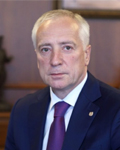


- About Us
-
Member Regional Governments
- China
- Japan
- South Korea (ROK)
- Introduction
- Busan Metropolitan City
- Daegu Metropolitan City
- Incheon Metropolitan City
- Gwangju Metropolitan City
- Daejeon Metropolitan City
- Ulsan Metropolitan City
- Sejong Special Self-Governing City
- Gyeonggi-do Province
- Gangwon State
- Chungcheongbuk-do Province
- Chungcheongnam-do Province
- Jeongbuk State
- Jeollanam-do Province
- Gyeongsangbuk-do Province
- Gyeongsangnam-do Province
- Jeju Special Self-Governing Province
- North Korea (DPRK)
- Mongolia
- Introduction
- Ulaanbaatar City
- Arkhangai Province
- Bayan-Ulgii Province
- Bayankhongor Province
- Bulgan Province
- Govi-Altai Province
- Govisumber Province
- Darkhan-Uul Province
- Dornod Province
- Dornogovi Province
- Dundgovi Province
- Zavkhan Province
- Orkhon Province
- Uvurkhangai Province
- Umnugovi Province
- Sukhbaatar Province
- Selenge Province
- Tuv Province
- Uvs Province
- Khovd Province
- Khentii Province
- Khuvsgul Province
- Culture & Tourism
- Russia
- Introduction
- Republic of Buryatia
- Republic of Sakha(Yakutia)
- Republic of Tuva
- Altai Region
- Zabaikalsky Territory
- Krasnoyarsk Territory
- Primorsky Territory
- Khabarovsk Territory
- Amur Region
- Irkutsk Region
- Kamchatka Territory
- Magadan Region
- Sakhalin Region
- Tomsk Region
- Kemerovo Region
- Republic of Khakassia
- Republic of Altai
- Associate member
- Observer
-
Subcommittee
- Subcommittee
- Subcommittee on Economy and Humanities Exchange
- Subcommittee on Agriculture
- Subcommittee on Educational and Cultural Exchange
- Subcommittee on Environment
- Subcommittee on Disaster Prevention
- Subcommittee on Energy and Climate Change
- Subcommittee on Mineral Resources Development
- Subcommittee on Tourism
- Subcommittee on Oceans and Fisheries
- Subcommittee on Bio-medical Industry
- Subcommittee on Sports
- Subcommittee on Logistics and Transportation
- Subcommittee on International Exchange of Human Resources
- Subcommittee on E-Commerce
- Subcommittee on Innovation Plus
- Subcommittee on Youth Policy
- Subcommittee on Traditional Medicine
- Getting to Know Your Region
- News/Activities
- Publications
- Database
The hub of exchange &
cooperation in Northeast Asia
Tomsk Region

- NationRussian Federation
- Government NameTomsk Region
- GovernorMazur Vladimir Vladimirovich
Symbol

Flag
History
- 1604: Tomsk was founded in 1604 by Tsar Boris Godunov
- 1738: Mail service was inaugurated and all freight now passed through Tomsk.
- 1804: A new period of the city's history began in 1804, when it was chosen as the administrative center of a new province and developed into a center with a city and town councils and a police department.
- 1917: After the Revolution in 1917, Tomsk became part of the Siberian and later the West Siberian Territory.
- 1937: Tomsk and the adjoining territories became part of Novosibirsk Region.
- 1944: The decree creating Tomsk Region was signed in August 4, 1944.
- 1991: Tomsk was awarded the status of historic city with a protected area of 950 hectares.
Topographic Feature and Characteristics
- A large part of the region (57%) is covered with forests with well-defined central taiga, southern taiga, and forest steppe zones. The areas of Tomsk Region bordering on Tyumen and Omsk Regions and part of Novosibirsk Region extend over a mostly boggy, nearly uninhabited plain. Tomsk continues to be a scientific and educational center, annually graduating 5000 specialists with higher education and an equal number with secondary vocational education.
Basic Information
| Contents | |
|---|---|
| Geography/Climate |
|
| Population |
|
| Major Event |
|
| Sisterhood & Friendship Provinces / Cities |
|
Economic Status
| Contents | |
|---|---|
| Economy |
|
| Industry |
|
| Product |
|
Others
- Contact:Ministry of International and Regional Relations
- Address:6 Lenin Square, Tomsk, Russia, 634050
- Tel.:7-3822-51-09-39
- Fax.:7-3822-51-11-99
- Official Website : http://www.tomsk.gov.ru






